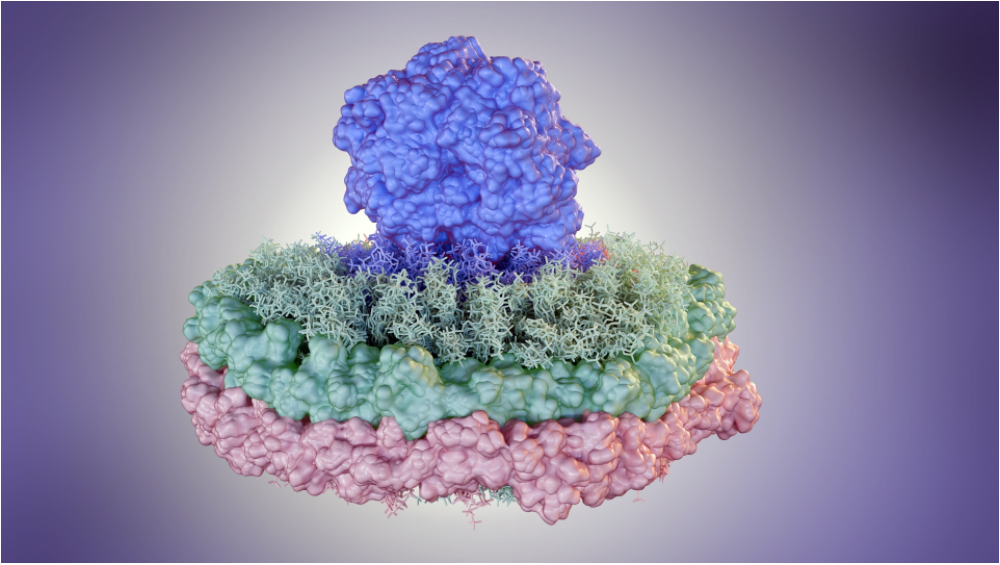Lipid Nanodiscs: A New “Circular” Force in Drug Delivery
Precise and safe delivery of drugs to target sites has always been an important task for researchers in modern medicine. With the development of nanotechnology, a variety of nanodrug delivery systems (NDDS) have been designed and prepared, such as the most familiar liposomes, polymer nanoparticles, and metal nanoparticles. However, a new kind of drug delivery system has also gradually emerged in recent years: lipid nanodiscs (LNDs). With their unique “flat disc” structure and excellent performance, they are also regarded as a new and promising drug delivery system.
What are Lipid Nanodiscs?

In a word, lipid nanodiscs can be simply imagined as a microscopic “lipid pancake”. They are made of a phospholipid bilayer and a backbone molecule. The former is in the center of the disc, while the latter surrounds the sides of the lipid membrane as if forming a security guard for the pancake. The backbone not only stabilizes the structure but also confers excellent biocompatibility and long-term circulation to the nanodiscs.
In appearance, LNDs are flatter than the familiar liposomes. They are usually about 10–70 nm in diameter, and only 4–6 nm thick. Due to their unique shape, it is easier for LNDs to adhere to blood vessel walls in the bloodstream, so as to deliver drugs to target sites more efficiently.
Why are Discs More Popular Than Spheres?
In the nanoworld, shape determines fate. Research has found that a particle’s aspect ratio (AR) significantly influences its distribution and clearance in the body. Disc-shaped or prolate ellipsoidal nanoparticles are more accessible to blood vessel walls and have stronger adhesion than spheres. This means LNDs have an advantage in crossing vascular barriers and reaching lesions directly.
Even more interestingly, disc-shaped particles are less likely to be “eaten” by macrophages. While spherical nanoparticles are easily encapsulated and engulfed by cell membranes, the contact angle and curvature of disc-shaped particles make it difficult for macrophages to “eat” them. The result: LNDs circulate longer in the body and can carry drugs farther.
Three Major Types of Lipid Nanodiscs
Currently, researchers have categorized LNDs into three main groups based on their backbone materials, each with its own unique formulation and application.
- PEG-stabilized LNDs
PEG (polyethylene glycol) like a protective layer around the edge of the disc, which can improve stability and can be targeted to target by modification.
Application Case: A study encapsulated doxorubicin with PEG-stabilized LNDs. They discovered that drug distribution to the heart, liver, and spleen was significantly reduced, which would greatly reduce toxicity. In a separate study, LNDs were modified via glycosylation to cross the blood-brain barrier, suggesting a potential direction for treating brain diseases in the future.
Highlights: They are especially suitable for encapsulating hydrophobic drugs and amphiphilic peptides, and can greatly reduce toxic side effects.
- Protein-backbone LNDs
This type of LND mimics high-density lipoprotein (HDL) in the body and often uses an apolipoprotein backbone. Because HDL possesses natural targeting properties in the body, this type of LND inherits these properties.
Application Examples: Using ApoE as a backbone allows LNDs to be specifically targeted to liver cells; LNDs with an ApoA1 backbone can be used for tumor treatment and can even carry chemotherapy drugs and immune adjuvants for a combined attack.
Highlights: Their strong natural targeting properties make them particularly suitable for applications in anti-tumor and anti-fungal settings.
- LNDs with an amphiphilic copolymer backbone
This type of LND is often prepared using styrene-maleic acid (SMA) copolymers and was initially used for the extraction and research of membrane proteins.
Application Potential: Studies have found that SMA-LNDs can bind to a large number of apolipoproteins in blood and specifically release drugs in acidic environments. This property suggests that they may be developed as tumor-targeting carriers in the future.
Highlights: Although there are currently few reports on their application in drug delivery, their potential is considerable.
Application Prospects: From Anti-Cancer to Antibacterial Applications
LNDs have demonstrated impressive capabilities in the field of drug delivery. They can not only efficiently deliver poorly soluble small molecule drugs, but also stably protect easily degradable peptide drugs.
Cancer Therapy: Classic anticancer drugs such as doxorubicin, carfilzomib, and paclitaxel, when delivered via LNDs, not only enhance their efficacy but also reduce their toxic side effects.
Antimicrobial Drugs: Melittin and the antimicrobial peptide LL37 are easily degraded in the body, but their stability is significantly improved and their toxicity is significantly reduced after binding to LNDs.
Brain Diseases: Modified LNDs can cross the blood-brain barrier, providing a new tool for treating neurological diseases.
Challenges and Future Prospects
While lipid nanodiscs hold great promise, they still have some way to go before clinical application:
Stability Issues: Long-term storage or excessive drug loading may lead to morphological changes.
Insufficient Mechanistic Research: Current research on the interactions between flexible LNDs and cells and the body is insufficient.
Lack of Standards: There is no unified evaluation system, and no marketed formulations exist. Industrial production technology also urgently needs breakthroughs.
Future research directions include exploring more stable formulations, developing efficient scalable preparation processes, and integrating intelligent targeting technologies to truly advance LNDs beyond the laboratory and into the clinic.
Summary
Lipid nanodiscs, with their unique structure and exceptional drug-loading capacity, are becoming a rising star in the field of nanodrug delivery. They not only prolong drug circulation but also enable precise targeting through modification, showing great potential in the treatment of cancer and brain diseases. While challenges remain regarding stability, evaluation standards, and industrialization, it is foreseeable that with in-depth research and technological advancements, LNDs will play a significant role in the future of drug delivery.
Lipid nanodiscs are at a critical stage in their transition from “laboratory stars” to “clinical rising stars.” Whoever can first address the challenges of scalability and standardization may gain an advantage in the nanodrug delivery race.
Related Products
